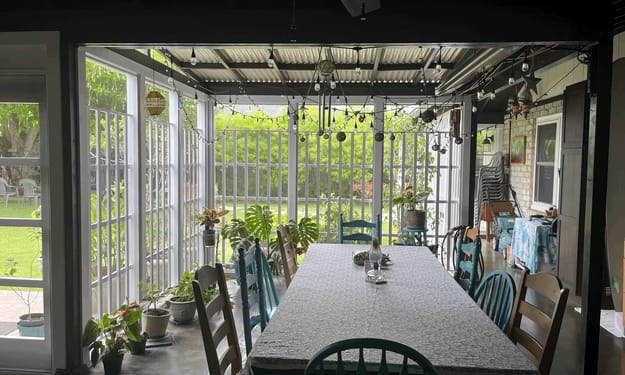How to Make a Bolster Cushion
A step-by-step guide on how to make a bolster cushion. This article will expand on the two most commonly used bolster cushions used today.

(Please ignore the bad lighting/editing or white cut-offs done on the images in this article, as the images were taken from a very old and classical book from my library)
(Links to certain terms and methods are highlighted in a different colour. Click the link and it will take you the article accordingly)
Bolsters
Less widely used than square and round scatter cushions. The bolster cushions is a furnishing accessory that can add character as well as comfort to a sofa, window seat, and in particular, a chaise longue.
Elsewhere in the home, a long and thin bolster may be used in place of a pillows on a bed.
A bolster cushion of narrow diameter can be laid against the foot of a door for keeping out draughts.
Bolsters can be made to match all manner of furnishing tastes by simply adding any one of a variety of decorations from formal piping and button, to extravagant frills and tassels.
Simple Bolster
Almost any type of fabric can be used for a bolster. However, simple bolsters are ideally suited to plain or stripped fabrics.
Frilled bolster, on the other hand, look particularly attractive when made up in a patterned fabric such as a floral print.
Bolster inner pads are available ready made, but you might choose to make your own.
To make a simple bolster, you will need cushion fabric, an inner pad, simple compass, and the basic sewing kit.
1. Cutting Out Ends: Make a pattern for the ends. Mark the seam line on the paper pattern 1.5 cm (5/8 in) from the edge, and measure around it to find the circumference of the end panel.
Cut out the circular fabric pieces for the end panels.

2. The Body: The main body width is the same as the circumference of the end panel. Mark the width and length of the bolster, plus a 1.5 cm (5/8 in) seam allowance, on paper. Use a set square to draw the corners, then cut out the pattern piece.

3. Sewing The Body: Pin the body pattern to the fabric, ensuring that any fabric motifs are correctly placed. Cut out the body. Fold it right sides facing, aligning the edges for the central seam.
Pin, tack, and sew the seam, leaving an opening for the pad. Press the seam open.

4. Attaching Ends: The end pieces need to be carefully aligned to the main body to avoid bunching. To do this, measure and mark quarters around both ends and the body with tailor's tacks.
Align the tacks and pin the ends, right sides inwards, to the body.

5. Notching Allowance: Tack the end pieces to the main body, make snips of 1 cm (3/8 in) into the seam allowance to ease the fit.
Sew the ends to the body. Remove tacking stitches, and notch the allowance around the ends to reduce fabric bulk.

6. Slip Stitching Closed: Pull the fabric right side out through the central opening in the main body. Press the bolster and insert the inner pad. Slip stitch the opening closed.


Piped and Frilled Bolster
Simple frills, piping, gathered end panels, and contrasting or matching buttons, or tassels are among the many decorative trimmings and treatments that can be used to transform a plain bolster into an unusual and attractive soft furnishing.
To make the bolster, you will need enough fabric for the panels and trimmings (the gathered ends will, of course, require more fabric than plain ends), an inner pad, simple compass, and the basic sewing kit.

1. Measuring for Width: Make paper patterns for an end piece and the body (see above). Measure the radius of the end pattern to find the width of the fabric needed for the gathered ends.
Mark the width on paper, adding 3 cm (1 1/4 in) for seam allowances. Check the measurements of this piece against the end piece pattern.

2. Measuring for Length: Measure around the pattern for the end panel as in step 1 of simple bolster (see above). Add 3 cm (1 1/4 in) for seam allowances, and mark this on the paper.
Cut out this pattern piece, pin it to the cushion fabric, and cut out two end pieces around it.

3. Sewing End Piece: On one long edge of a piece for the gathered end, make a 1.5 cm (5/8 in) turning to the wrong side and press it. Bring the short edges of the panel together, the right sides facing.
Pin, tack, and sew along these short edges, leaving a 1.5 cm (5/8 in) seam allowance. Remove the tacking stitches. Repeat for the other end panel.

4. Attaching Piped Frill: Make up the main body. The piping and frill should be the same length as the fabric for the gathered end.
Mark quarters on the frill and the body ends with tailor's tacks. Pin and tack the frills to each end of the main body, then pin and tack the piping to the frill seam line.

5. Attaching Ends: Pin, tack, and sew the unturned edges of the ends to the piped and frilled body ends. Notch the allowances. Turn right side out through the opening, and press.

6. Gathering Ends: Using strong thread, hand sew even gathering stitches close to the turned edge of each end. Pull up the gathering thread, and distribute the folds evenly. Stitch over the ends of the thread to secure.


7. Attaching Button: The gathered ends should be tightly closed, so that buttons will cover the holes. Sew on the buttons at the centers of the gathered ends.
Insert the pad through the opening in the body seam, then slip stitch it closed.


About the Creator
Temoor Dar
💡Topic: Entrepreneur and Writer💡
♟️Hobbies: Traveling, Poems, Playing Chess and Solving Puzzles♟️
🎂Born: July 7, 1991🎂
📍Born in Stockholm, Sweden, and now a Londoner since 1996📍
📚Lifelong Learner📚
🌟Wisdom from Mentors🌟
Enjoyed the story? Support the Creator.
Subscribe for free to receive all their stories in your feed. You could also pledge your support or give them a one-off tip, letting them know you appreciate their work.






Comments
There are no comments for this story
Be the first to respond and start the conversation.